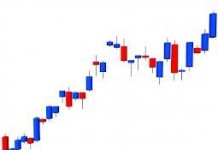Bollinger bands are technical indicators. Technical indicators are mathematical operations that a charting platform can apply to the historical price information of an asset in order to derive additional information about it. This is done in order to try to predict future trends that traders can take advantage of. Basically Bollinger bands take 20 period simple moving averages that determine mid-term trends of asset price action, using two standard deviations from this middle mark they create a pair of plus and minus bands either side of it.
These bands should not be confused with support or resistance levels, nevertheless asset prices do tend to stay within their bounds. The fact that they do this allows traders to use Bollinger bands as a part of their trading strategy. They are particularly useful for defining trending, ranging or volatile markets as they move closer when an asset is ranging and further apart when an asset is experiencing volatility. It is out of these volatile moments that trends can break out. Also, when the price of an asset goes outside of the Bollinger bands, either above or below, this is referred to as ‘breaching the bands’ and is usually an indication that a reversal is imminent. The price will tend to stay within these bounds upwards of 95% of the time, this means that the 5% of the time when an asset breaches carries a very high likelihood of reversal.
The way to trade on this is to wait for at least two candles to open either above or below the respective Bollinger bands, as soon as this occurs a binary option should be purchased predicting a reversal. If initial trade ends in the money and the asset continues along its new trajectory then a series of quick to expire trades can be placed in order to maximise the amount that can be made on the reversal.















